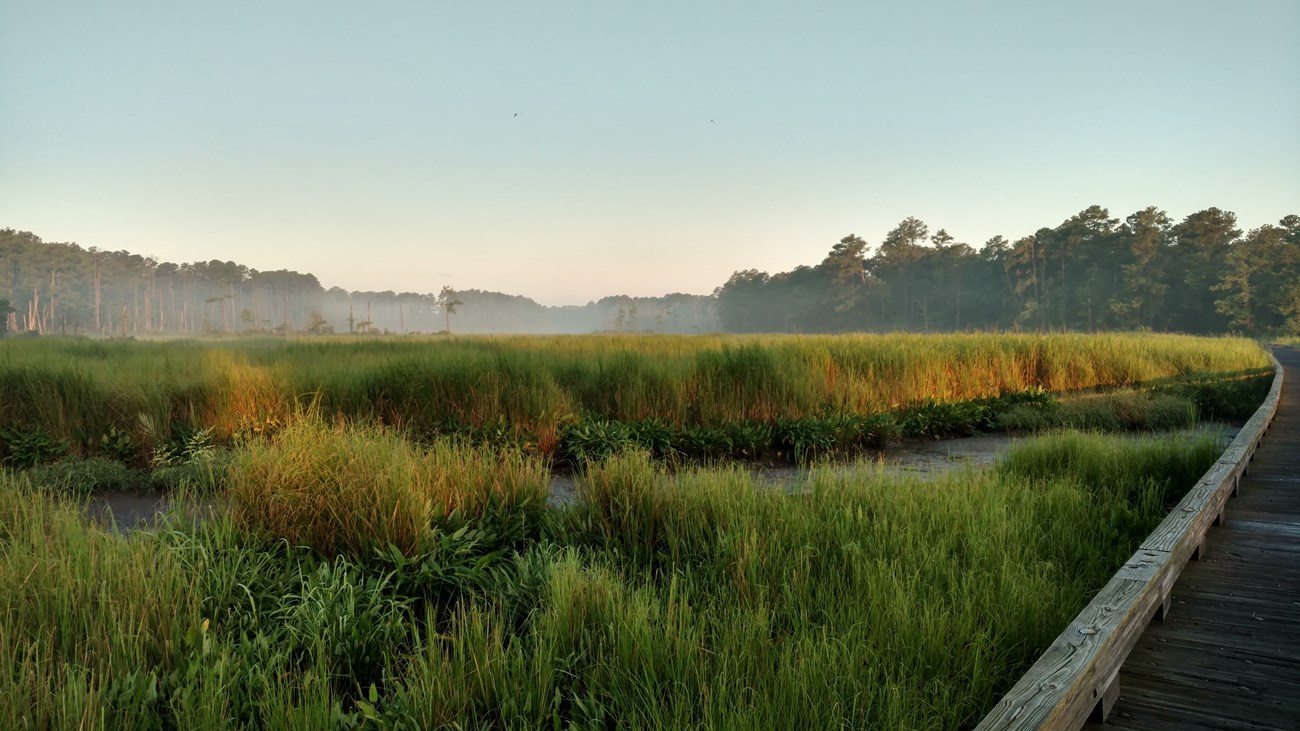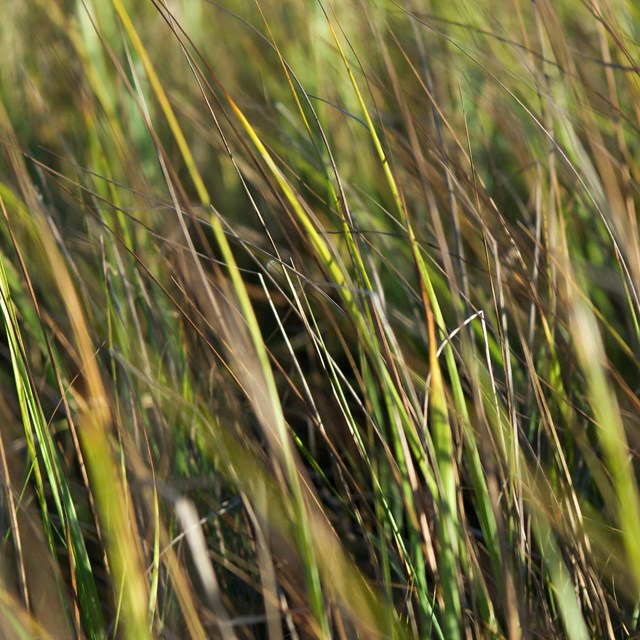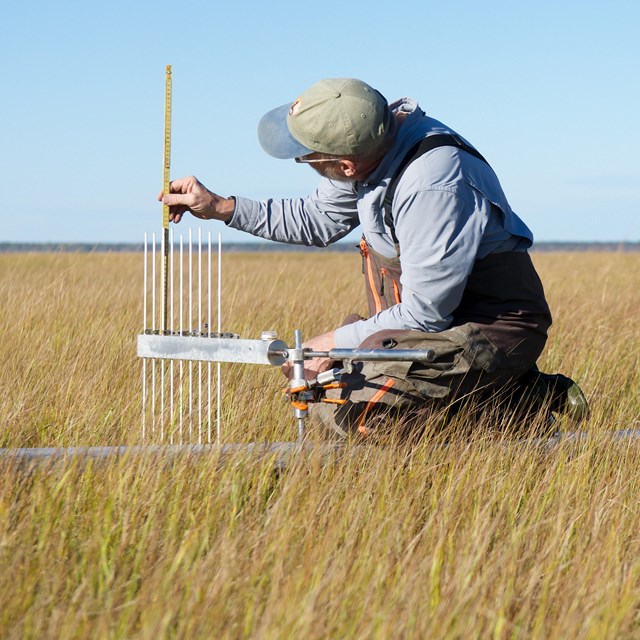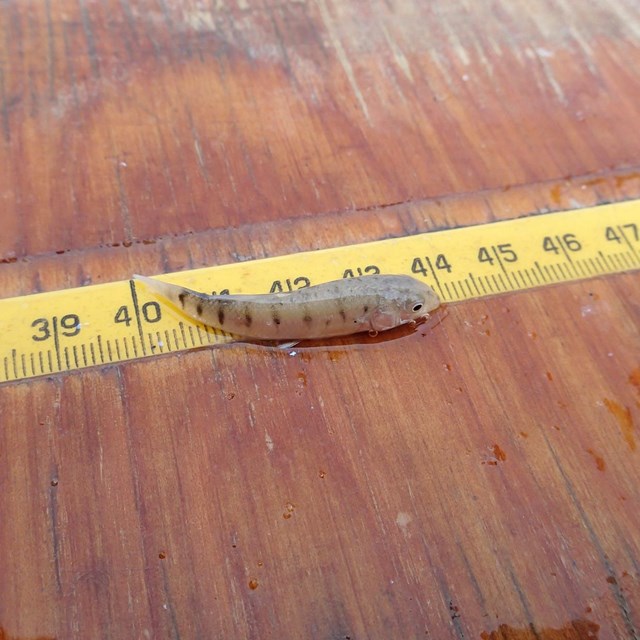
NPS Photo
Ideal nesting grounds for seabirds and raptors, and the sandy rendezvous for mating horseshoe crabs, salt marshes are sensitive yet resilient ecosystems at the intermediary of land and sea. They get the best, and worst, of both worlds. The plants and animals that thrive here can withstand the deluge of tidewater and the absence of it. But as salt marshes experience the impacts of other forces, biodiversity needs to try to adapt. The U.S. northeast coast has a long history of altering salt marshes. People have extensively ditched marshes to control mosquito populations, farmed native salt hay (Spartina patens) for cattle, and built infrastructure (roads, causeways, bridges, and dikes) that restrict incoming and outgoing tides. As the coastal corridor becomes more urbanized with encroaching settlements, marshlands are getting smaller and more fragmented.
Protecting salt marshes and their vibrant biodiversity means first better understanding them. Here at the Northeast Coastal and Barrier Network, we’ve been monitoring three salt marsh vital signs: vegetation, tidal wetland elevation, and nekton. See how and why we do what we do below.
Vital Signs
-
 Salt MarshVegetation
Salt MarshVegetationMonitoring plants can reveal signs of habitat change and overall salt marsh health
-
 Salt MarshTidal Wetland Elevation
Salt MarshTidal Wetland ElevationSalt marshes need to maintain their surface elevation above water, especially when sea levels are rising
-
 Salt MarshNekton
Salt MarshNektonNekton (free-swimming fishes and crustaceans) are abundant and key vital signs of estuarine health
Last updated: June 27, 2024
